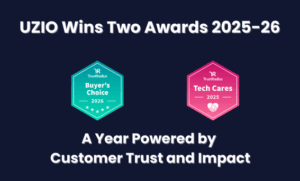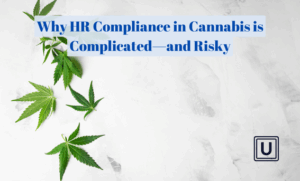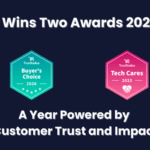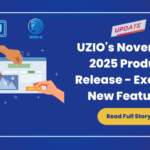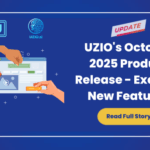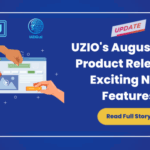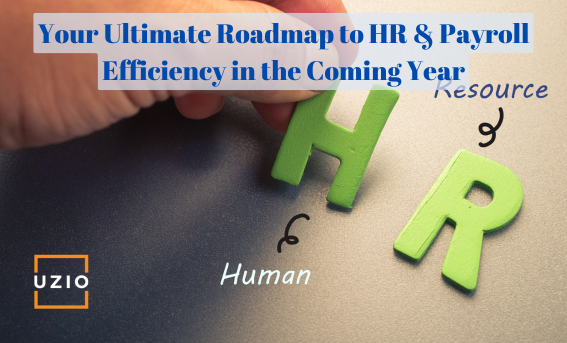
Strategic Planning for HR & Payroll Success: A Step-by-Step Guide for the New Year
Quick links
-
Introduction: Why Goal-Setting Matters
-
Review of the Current State
-
Compliance and Regulatory Prep
-
Streamlining Processes & Automation
-
Employee Experience: A Top Priority
-
Setting SMART Goals for HR and Payroll
-
Leveraging Employee Feedback
-
Measuring Success: KPIs for HR and Payroll Goals
-
Engaging Employees in the Goal-Setting Process
-
Conclusion: Turning Goals into Action
1. Introduction: Why Goal-Setting Matters
As we step into a new year, setting clear HR and payroll objectives is more than just a best practice—it’s a strategic necessity. Clear goals provide direction, streamline day-to-day operations, and ensure that your business remains agile in a competitive landscape.
Targeted goals can also help your organization stay compliant with ever-changing regulations, reduce errors, and improve employee satisfaction. By aligning HR and payroll strategies with broader business objectives, you pave the way for growth and operational excellence.
Start the year strong by defining your roadmap—because when your HR and payroll processes run smoothly, your entire organization thrives.
2. Review of the Current State
Before setting goals for the future, it’s essential to understand where you currently stand. Start by conducting an internal audit of your HR and payroll systems. Evaluate your existing software platforms, workflows, and processes to determine what’s working and what’s not.
Look for inefficiencies, such as repetitive tasks that can be automated, or compliance risks that might lead to penalties. Assess whether your current tools are user-friendly and scalable enough to meet the demands of your growing business.
Identifying these gaps gives you a clear picture of areas that require immediate attention and improvement. This review sets the stage for informed decision-making as you plan for the year ahead.
3. Compliance and Regulatory Prep
Staying ahead of compliance and regulatory changes is crucial for HR and payroll management. Begin by reviewing any new state or federal labor laws, tax updates, or industry-specific regulations that may impact your business in the upcoming year.
Ensure your payroll system is configured to handle changes like minimum wage adjustments, benefits mandates, or updated reporting requirements. For HR, confirm that employee handbooks, workplace policies, and training programs are up to date with the latest regulations.
Proactively addressing compliance helps you avoid costly penalties and builds trust with employees by demonstrating a commitment to transparency and legal adherence. Set aside time and resources for regular compliance checks throughout the year to maintain readiness.
4. Streamlining Processes & Automation
Efficiency is the cornerstone of effective HR and payroll management. Start by identifying bottlenecks in your current workflows. Are there repetitive tasks consuming valuable time? Is data entry prone to errors? Pinpoint these inefficiencies as opportunities for improvement.
Next, consider automation tools to simplify processes. Modern HRIS and payroll software can automate tasks such as tax filings, benefits enrollment, time tracking, and employee onboarding. Integration across systems ensures seamless data flow, reducing manual intervention.
Streamlined processes not only save time but also improve accuracy and compliance. By leveraging automation, your HR and payroll teams can shift their focus to strategic initiatives, like employee engagement and talent development, driving long-term business success.
5. Employee Experience: A Top Priority
Modern HR and payroll systems play a crucial role in shaping the employee experience. Employees expect seamless interactions, whether it’s accessing pay stubs, managing benefits, or requesting time off. Enhancing their experience is key to retaining talent and boosting morale.
- Employee Self-Service Tools: Empower your workforce with user-friendly platforms that let them manage payroll, benefits, and leave requests independently. Self-service reduces administrative burdens and improves employee satisfaction.
- Accurate and Timely Payroll: Nothing erodes trust faster than payroll errors. Ensure your system processes wages accurately and adheres to deadlines, leaving no room for dissatisfaction.
- Feedback Integration: Regularly gather feedback to understand employees’ pain points with current HR and payroll processes. Use their insights to make meaningful improvements.
By prioritizing employee experience, you not only improve satisfaction but also position your organization as an employer of choice in a competitive job market.
6. Setting SMART Goals for HR and Payroll
To ensure your goals are actionable and achievable, use the SMART framework—goals should be Specific, Measurable, Achievable, Relevant, and Time-bound. Here’s how to apply it to your HR and payroll strategy:
- Specific: Define clear objectives. For example, “Implement a new payroll system by Q2” is more actionable than “Improve payroll processes.”
- Measurable: Quantify your goals. For instance, aim to “reduce payroll errors by 20%” or “increase employee satisfaction scores by 10%.”
- Achievable: Ensure goals are realistic given your team’s resources and capabilities. Stretch goals are motivating but must remain attainable.
- Relevant: Align objectives with broader business priorities, such as cost savings, compliance, or employee retention.
- Time-bound: Set deadlines to create a sense of urgency. For example, “Complete compliance training for all employees by March 31.”
SMART goals provide a structured roadmap, ensuring that your HR and payroll initiatives stay focused and deliver tangible outcomes.
7. Leveraging Employee Feedback
Incorporating employee insights can be a game-changer for your HR and payroll strategy. Employees often have first-hand knowledge of the challenges and inefficiencies in current processes. Here’s how to effectively gather and use their feedback:
1. Conduct Surveys
- Use quick and anonymous surveys to ask employees about their experience with payroll systems, benefits enrollment, or HR support.
- Questions can include:
- Are pay stubs clear and accessible?
- Is the benefits enrollment process user-friendly?
- What HR services would you like improved?
2. Host Focus Groups
- Bring together small groups of employees to discuss specific challenges.
- This allows for deeper exploration of recurring issues and potential solutions.
3. Analyze Feedback for Trends
- Look for common themes in the feedback, such as late payroll processing, unclear tax deductions, or difficulty accessing HR support.
- Prioritize issues that impact the largest number of employees or have significant business implications.
4. Act on Insights
- Use the feedback to refine your systems and processes.
- For instance, if employees report delays in accessing pay slips, consider integrating self-service portals or mobile apps.
5. Close the Loop
- Communicate to employees the changes you’ve implemented based on their feedback.
- This not only boosts trust but also encourages future participation in feedback initiatives.
By aligning HR and payroll improvements with employee needs, you can enhance satisfaction, improve retention, and foster a culture of transparency and collaboration.
8. Measuring Success: KPIs for HR and Payroll Goals
Setting goals is only the beginning; tracking their progress is where the real impact lies. By identifying and monitoring Key Performance Indicators (KPIs), you ensure accountability and align efforts with measurable outcomes.
Pro Tip: Use our Annual HR & Payroll Goals Tracker to stay organized and monitor your progress throughout the year. [Download Now]
1. Define Relevant KPIs
- Choose KPIs that directly tie to your goals. Examples include:
- Payroll Accuracy Rate: Percentage of payroll processed without errors.
- Employee Turnover Rate: Measure of staff retention.
- Compliance Rate: Number of audits passed or compliance issues resolved.
- Time-to-Fill Open Positions: Efficiency in recruitment.
- HR Response Time: Average time taken to address employee queries.
2. Set Benchmarks
- Use past performance data or industry standards to set benchmarks.
- For example, aim to reduce payroll errors from 3% to 1% or improve benefits enrollment completion rates from 85% to 95%.
3. Implement Tracking Tools
- Leverage HR and payroll software to track KPIs in real time.
- Dashboards, automated reports, and visual analytics can provide actionable insights.
4. Review Progress Regularly
- Schedule monthly or quarterly reviews to assess progress against KPIs.
- Adjust strategies if certain goals aren’t on track.
5. Celebrate Milestones
- Recognize and celebrate achievements when KPIs show progress.
- For instance, highlight a successful compliance audit or faster payroll processing time during company updates.
6. Iterate and Improve
- Use the insights gained from KPI tracking to refine next year’s goals.
- Continuous improvement ensures that your HR and payroll strategies evolve with business needs.
By focusing on measurable results, you can keep your HR and payroll goals actionable, transparent, and aligned with your organization’s success metrics.
9. Engaging Employees in the Goal-Setting Process
While setting HR and payroll goals is crucial, involving employees ensures alignment, engagement, and smoother implementation. Engaged employees are more likely to adopt and support new processes, making your goals achievable.
1. Communicate the Why
- Clearly explain the purpose of the goals and their impact on employees and the organization.
- Example: Highlight how improving payroll accuracy ensures timely and error-free paychecks.
2. Seek Employee Feedback
- Conduct surveys or focus groups to understand pain points in HR and payroll systems.
- Use insights to identify areas needing improvement, such as benefits enrollment processes or access to pay stubs.
3. Create Transparent Policies
- Share updated HR policies, payroll timelines, and any new initiatives.
- Transparency builds trust and minimizes confusion.
4. Provide Training
- Train employees on any new tools, platforms, or processes introduced as part of your goals.
- Example: Tutorials for self-service HR portals or new time-tracking systems.
5. Recognize Employee Contributions
- Celebrate employees who adopt changes or contribute ideas for improving HR and payroll workflows.
- Recognition programs encourage active participation and positive attitudes.
6. Encourage Ongoing Dialogue
- Maintain an open-door policy for feedback throughout the year.
- Regular check-ins ensure employees feel heard and can voice concerns about implementation challenges.
7. Incentivize Participation
- Offer small incentives for employees who complete surveys, adopt self-service platforms, or assist in testing new processes.
- Example: A gift card for completing benefits enrollment early.
8. Showcase Results
- Share progress updates on key initiatives, such as improved payroll accuracy or enhanced compliance.
- Demonstrating success reinforces trust and encourages continued engagement.
Engaging employees in the process fosters a sense of ownership and collaboration, ensuring the success of your HR and payroll initiatives. When employees feel valued and informed, they become partners in driving organizational growth.
10. Conclusion: Turning Goals into Action
Setting HR and payroll goals is not just a year-end task; it’s a strategic foundation for organizational success. By assessing your current systems, ensuring compliance, and leveraging automation, you create a more efficient, compliant, and employee-friendly environment. Engaging your employees in this process ensures that changes are embraced and goals are achieved collaboratively.
As you move forward, remember:
- Consistency: Regularly review and refine your processes.
- Communication: Keep stakeholders informed and aligned.
- Commitment: Stay focused on measurable outcomes and long-term growth.
By following this roadmap, your HR and payroll operations will not only meet current challenges but also position your organization for sustainable success in the year ahead.
Recommended Reading: Biggest pain point with Payroll and HR software
Get in touch with us for an expert-led demo to know more about UZIO all-in-one payroll software.
